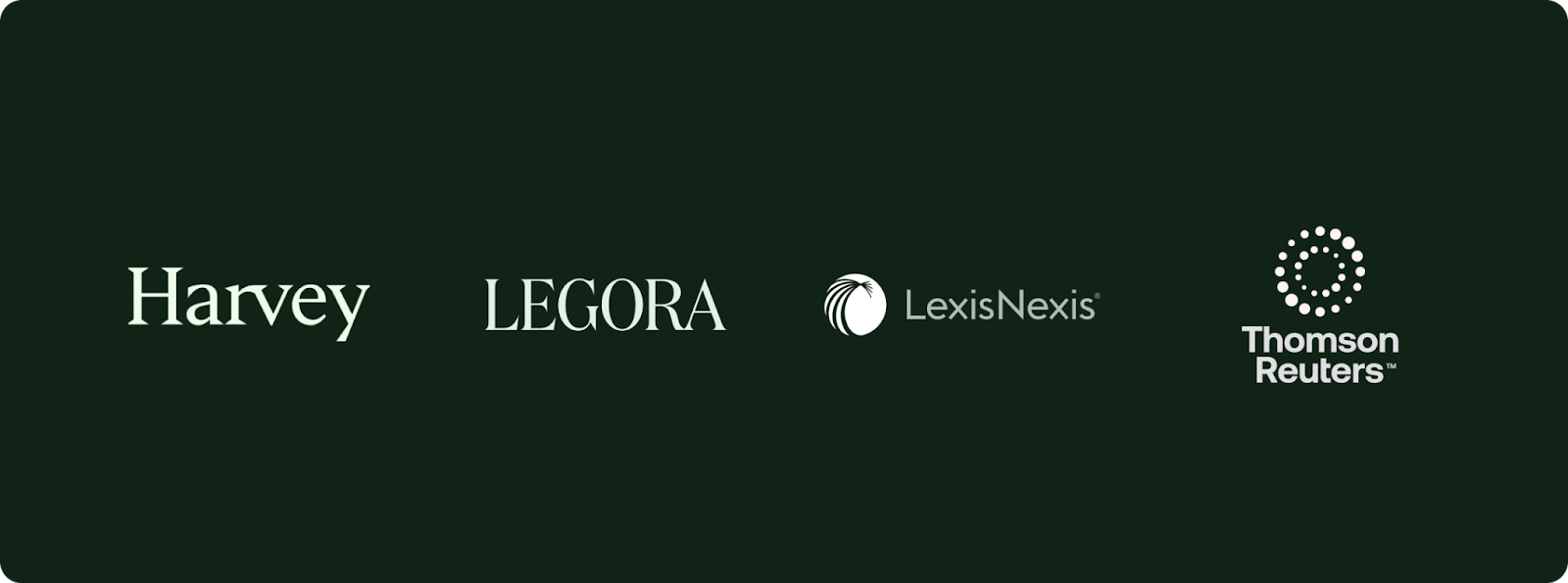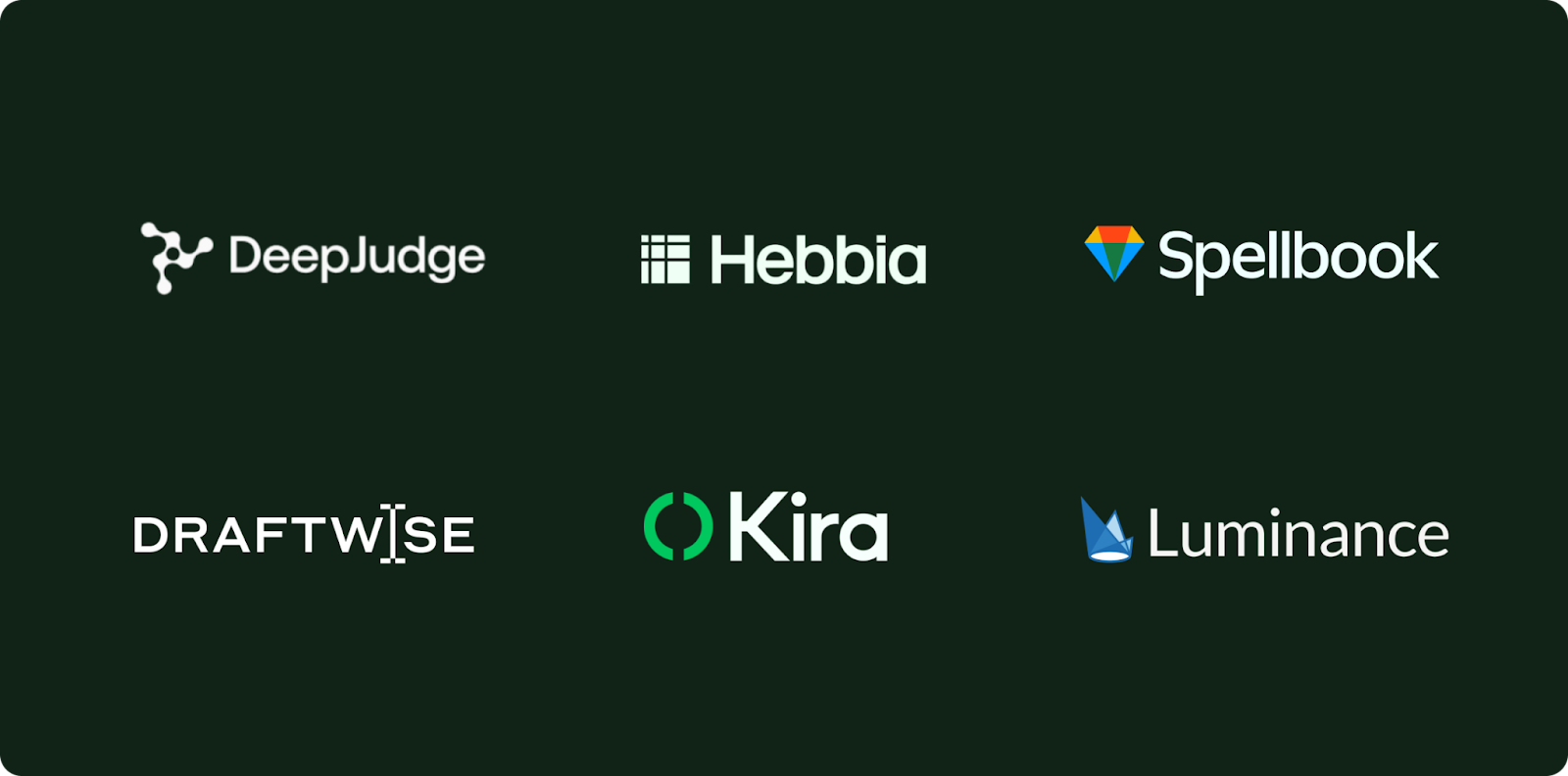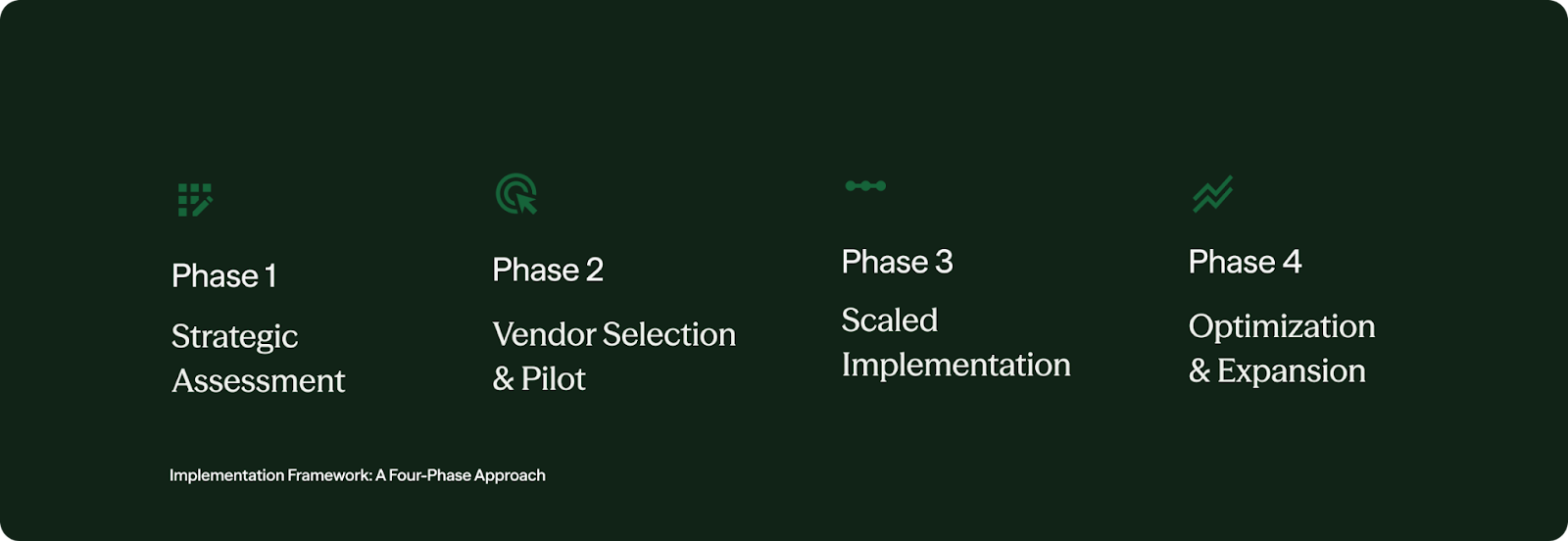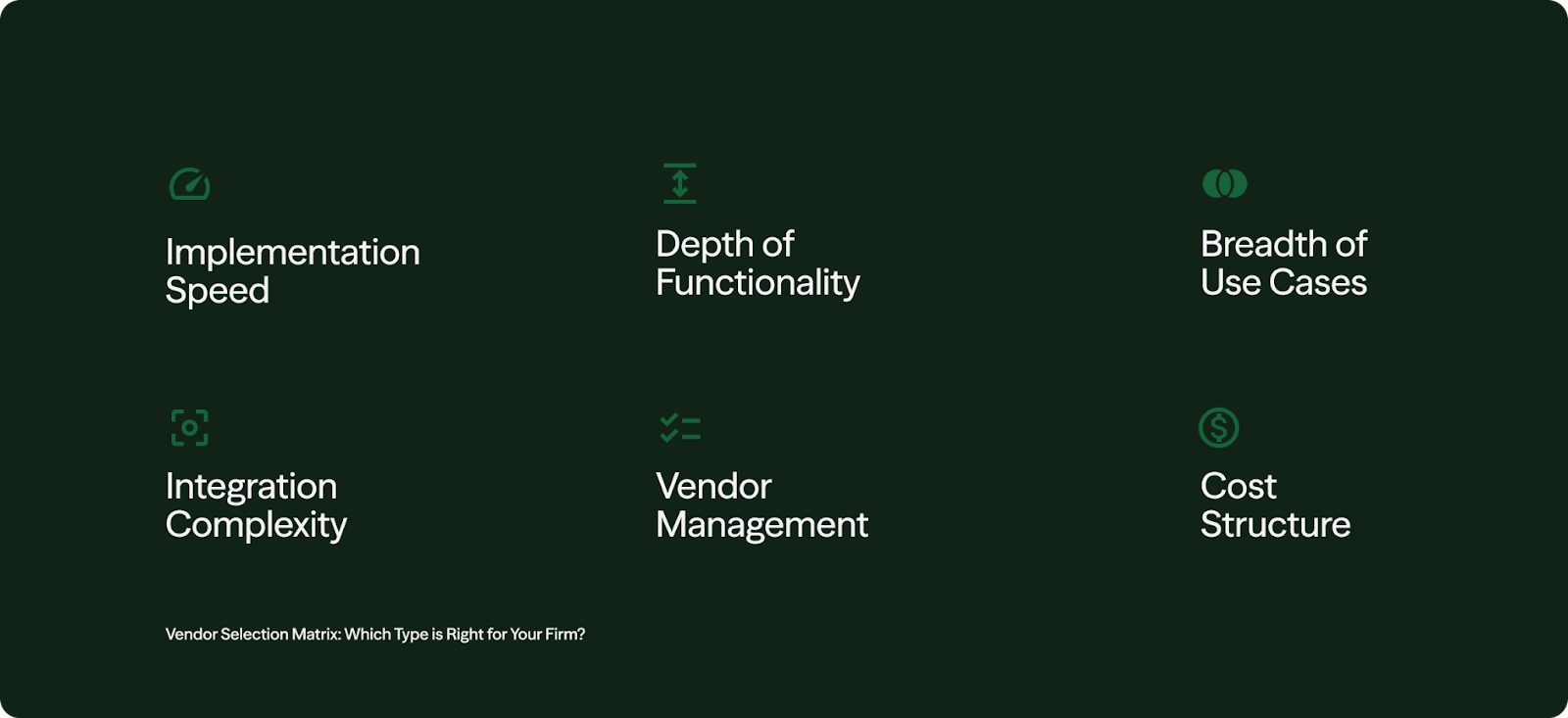Navigating the Legal AI Landscape: A Comprehensive Guide for Mid-Sized Firms
As mid-sized firms evaluate Legal AI, they encounter an increasingly crowded marketplace of legal technology vendors. Each approaches the challenge of creating lasting value for lawyers differently, with varying focuses, technical approaches, and implementation models.

Before diving into AI implementation, use this practical checklist to ensure your firm has the fundamentals: download the AI-Readiness Checklist.
Mid-sized law firms are at a critical decision point as AI adoption accelerates across the legal industry.
Fee earner adoption has jumped from 48% to 72% in just one year, creating a widening gap between firms that embrace AI and those that don't. For firms with 50-500 lawyers, the window to gain competitive advantage is narrowing.
This guide provides practical insights for navigating the Legal AI landscape, from vendor selection to implementation strategies and best practices for successful adoption.
The Current Legal AI Vendor Landscape
As mid-sized firms evaluate Legal AI, they encounter an increasingly crowded marketplace of legal technology vendors. Each approaches the challenge of creating lasting value for lawyers differently, with varying focuses, technical approaches, and implementation models.
The Legal AI market has matured into three distinct categories, each serving different firm needs and use cases:
General-Purpose Legal AI Platforms

What they are: Comprehensive AI solutions designed to handle multiple legal workflows across various practice areas. These platforms aim to be the "Swiss Army knife" of Legal AI.
Best for: Firms seeking single-vendor solutions with broad capabilities across practice areas, or those wanting to minimize vendor management complexity.
Key considerations:
- May lack depth in specific workflows compared to specialized tools
- Evaluate whether foundation models can solve your use cases at lower cost
- Often require significant training and change management
Examples:
- Harvey: Comprehensive Legal AI platform with workflow automation
- Legora: Multi-practice area AI assistant with document generation
- Lexis Create+: Research and drafting platform integrated with legal databases
- TR CoCounsel: Thomson Reuters' AI-powered legal research and drafting tool
Specialized Workflow Tools

What they are: Legal AI focused on specific legal tasks such as contract review, document drafting, legal research, or compliance monitoring.
Best for: Firms with clear pain points in particular workflows or those wanting best-in-class solutions for specific tasks.
Key considerations:
- May involve more than one vendor partnership
- Often need integration with existing document management systems
- Can provide deeper functionality in their specialty areas
Examples:
- Hebbia: Finance-oriented document analysis and research
- DeepJudge: AI search across internal systems for precedents
- SpellBook: Contract drafting and review automation
- Draftwise: Precedent-driven solution for drafting, review, and negotiation
- Kira Systems: Contract analysis and due diligence
- Luminance: AI for legal document review and analysis
Document Management Systems (DMS) with AI Enhancement

What they are: Traditional document management platforms enhanced with AI capabilities to improve access to firm precedents, expertise, and institutional knowledge.
Best for: Firms with substantial precedent libraries and existing DMS investments looking to enhance their current systems.
Key considerations:
- Value depends heavily on the quality of existing knowledge base
- Integration is typically smoother since it is built on existing infrastructure
- May be limited by the scope of the current document repository
Examples:
- iManage: Enhanced document management with AI-powered search and insights
- NetDocuments: Cloud-based DMS with AI-driven document intelligence
Implementation Framework: A Four-Phase Approach

Successful legal AI implementation requires a structured approach. The most effective firms follow this proven framework:
Phase 1: Strategic Assessment (Months 1-2)
- Define specific business objectives and success metrics
- Establish baseline performance measurements
- Prioritize 1-2 practice areas based on:
- Repetitive work volume
- Quality of existing precedents
- Partner champion availability
- Client impact potential
Phase 2: Vendor Selection and Pilot (Months 2-4)
- Request demonstrations using your actual documents
- Conduct focused pilots with 5-10 lawyers on specific document types
- Measure results over 60-90 days with clear metrics
- Evaluate vendor support and integration capabilities
Phase 3: Scaled Implementation (Months 4-8)
- Expand gradually to additional practice areas
- Invest in comprehensive training programs
- Establish regular user feedback loops
- Monitor adoption rates and address resistance
Phase 4: Optimization and Expansion (Month 8+)
- Evaluate results against baseline metrics
- Explore advanced AI capabilities
- Document and share best practices
- Consider expanding to additional use cases
Vendor Selection Matrix: Which Type is Right for Your Firm?

This comparison will help you understand the trade-offs between the three main categories of legal AI solutions:
Implementation Speed (How quickly can you get up and running?)
- General-Purpose Platforms: 3-6 months - These comprehensive systems take longer to set up because they affect multiple workflows
- Specialized Tools: 1-3 months - Focused on one task, so faster to implement and test
- DMS-Enhanced: 1-2 months - Builds on your existing document system, so integration is smoother
Depth of Functionality (How powerful is the AI for specific tasks?)
- General-Purpose Platforms: Good across many areas - Like a reliable sedan that handles most driving needs well
- Specialized Tools: Excellent in their specialty - Like a sports car built for speed, or a truck built for hauling
- DMS-Enhanced: Solid for document-related tasks - Enhances what you already do with documents
Breadth of Use Cases (How many different legal tasks can it handle?)
- General-Purpose Platforms: Handles contract review, research, drafting, and more across multiple practice areas
- Specialized Tools: Typically focuses on one main function (e.g., only contract analysis or only legal research)
- DMS-Enhanced: Primarily improves document search, precedent access, and knowledge management
Integration Complexity (How hard is it to connect with your existing systems?)
- General-Purpose Platforms: Moderate effort - May require connecting to multiple existing systems
- Specialized Tools: More complex - Often need custom connections to your document management, billing, and other systems
- DMS-Enhanced: Simplest - Works within your existing document management framework
Vendor Management (How many relationships do you need to manage?)
- General-Purpose Platforms: One main vendor relationship for most AI needs
- Specialized Tools: Multiple vendor relationships if you want AI for different tasks
- DMS-Enhanced: Usually one additional feature from your existing DMS provider
Cost Structure (What should you expect to pay?)
- General-Purpose Platforms: Higher upfront cost but covers multiple use cases (think all-inclusive resort)
- Specialized Tools: Varies widely - pay for what you need, but costs can add up with multiple tools
- DMS-Enhanced: Moderate additional cost to your existing DMS subscription
Training Requirements (How much time will your lawyers need to learn the system?)
- General-Purpose Platforms: Significant training needed - new interface and multiple features to learn
- Specialized Tools: Moderate training - focused on one workflow, but may be unfamiliar
- DMS-Enhanced: Minimal training - builds on familiar document management processes
Measuring Success: Key Performance Indicators
Track these metrics to demonstrate ROI and guide optimization:
Financial Metrics
- Realization rate improvement (target: 5-15% over 12 months)
- Revenue per lawyer (measured quarterly)
- Matter profitability (pre/post-AI comparison)
Operational Metrics
- Document turnaround time reduction
- Error rates (revision cycles, client-identified issues)
- Precedent access efficiency
- Client satisfaction scores
Leading Indicators
- User adoption rates (sustainable adoption typically requires 3-6 months)
- Training completion percentages
- Support ticket volume trends
Risk Management and Best Practices
Technical Risks
- Hallucination management: Implement verification processes for AI-generated content
- Data confidentiality: Ensure proper data handling and client confidentiality protocols
- System reliability: Plan for downtime and have backup processes
Ethical Considerations
- Professional responsibility: AI competence is increasingly considered a professional obligation
- Client disclosure: Develop clear policies about AI usage disclosure
- Billing practices: Establish appropriate billing guidelines for AI-assisted work
Next Steps for Implementation
- Establish baselines: Document current performance metrics in target practice areas
- Identify champions: Find willing partners and associates to lead adoption
- Define use cases: Start with specific, measurable workflows rather than broad implementations
- Develop change management: Plan training, communication, and support strategies
- Create client communication: Develop messaging that positions AI as service enhancement
Conclusion
The legal AI landscape offers tremendous opportunities for mid-sized firms willing to approach adoption strategically. By understanding the vendor ecosystem, following a structured implementation approach, and maintaining focus on measurable outcomes, firms can successfully harness AI's potential while managing its risks.
The window for strategic AI adoption is narrowing as client expectations evolve and competitive pressures increase. Firms that move thoughtfully but decisively will position themselves for long-term success in an AI-powered legal marketplace.
Ready to explore AI for your practice? Let's discuss your specific needs. Get in touch here.
About Ozan Yalti
Ozan Yalti is the co-founder of Draftwise, bringing a decade of legal experience to his role as a technology entrepreneur. Prior to founding Draftwise, he practiced law at Clifford Chance LLP, where he specialized in banking and finance. His vision for integrating technology with legal practice was first sparked during his time at Stanford Law School.
Drawing from his extensive background as a practicing attorney, Ozan founded Draftwise with a mission to transform how lawyers approach their core workflows. "What drives me is seeing thousands of lawyers benefit from Draftwise," he explains. "The legal profession demands excellence, and our goal is to empower lawyers with tools that enhance their most critical work processes."



.avif)